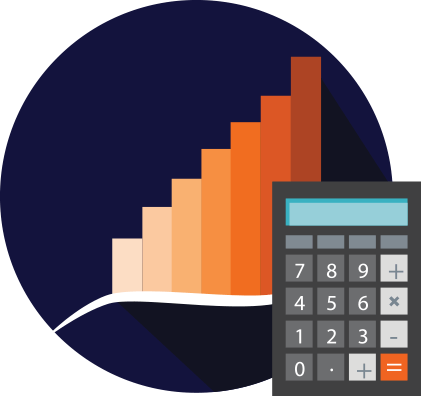When beginning investors wonder how they can grow their wealth and invest more effectively, they often become discouraged. How is it possible to figure out which stocks to invest in? One way to overcome this difficulty is by using an indexing strategy.
An indexing strategy can help you get started quickly and easily. Later, you can branch out, but indexing is a good way to start investing, especially if you don’t have a lot of money.
What is an Indexing Strategy?
An indexing strategy helps you access a wide swath of the market with one investment. With indexing, you use your money to purchase shares of an index fund or an index exchange-traded fund (ETF).
Index products function as collections of investments. For example, an index mutual fund that follows the S&P 500 allows you to invest in every company listed on that index. So, when you buy one share of an S&P 500 index mutual fund, you are buying a piece of 500 companies.
Rather than worrying about which stock to pick, you instantly own all those companies.
There are other index funds and ETFs as well. You could invest in the companies on the Russell 2000, getting access to thousands of small-cap stocks with the potential for growth. There are also all-world index funds and ETFs that offer exposure to companies outside the U.S.
In addition to stock index funds, you can also invest in bond index funds that follow specific bond indexes and provide you access to a variety of income investments.
Asset Allocation with an Indexing Strategy
When using an indexing strategy, you can better use asset allocation. Modern Portfolio Theory holds that your portfolio allocation matters more than specific investments. So, if you have a good mix of stocks and bonds that help you meet your investment goals, you could potentially grow your wealth.
Start by figuring out what asset allocation makes sense for you.
If you’re younger and using your investments to grow your retirement account, it might make more sense to emphasize stock index funds and ETFs. You might set up a split of 90% stock funds and 10% bond funds.
On the other hand, if you think you’ll the money sooner, or if you’re approaching retirement, you might weigh your portfolio toward bond funds.
Pay attention to your asset allocation and consider rebalancing if you start seeing one asset start to take over more of your portfolio.
How to Start Using an Indexing Strategy
Starting an indexing strategy is fairly straightforward. Here are the steps you can take to get started with indexing:
- Decide how much you can invest regularly. Figure out whether you can invest on a weekly or monthly basis. Commit to investing that amount each month.
- Determine your desired asset allocation. Look at your investing goals and create an asset allocation that works for you.
- Open a brokerage account online. Research brokers and find one that offers an automatic investment plan. Most brokers will let you buy index ETFs without charging a trading fee. Some, like Schwab and Fidelity, will let you buy index mutual funds free of charge if you use their proprietary index funds.
- Set up your automatic investment plan. Once you have your account, set up your plan. Most brokers will let you automatically deposit money each month and choose investments. You can usually divide your investment as you wish. So, if you contribute $100 each month, you might put $85 toward a stock index ETF and $15 toward a bond ETF.
- Increase your investment when you’re able. Don’t forget to increase your investment over time. This will help you build your portfolio and take better advantage of compounding returns.
You can also consider a robo-advisor, like Betterment. You answer a few questions and set up your regular investment. Then, the robo-advisor does the rest, creating a portfolio that fits your risk tolerance using index ETFs.
Add Other Investments Later
An indexing strategy works well with dollar-cost averaging and getting started. However, as you learn more about investing, you might want to try other investments. Indexing can be a good strategy for long-term wealth building, depending on your situation.
However, if you want to experiment with short-term returns, it can make sense to look into other investments. You can consider learning how to choose individual stocks or even experiment with cryptocurrency. Just make sure you aren’t putting your long-term goals at risk.
Indexing works well with other investment strategies and can be an easy way to get started while you learn about other choices for investing.

